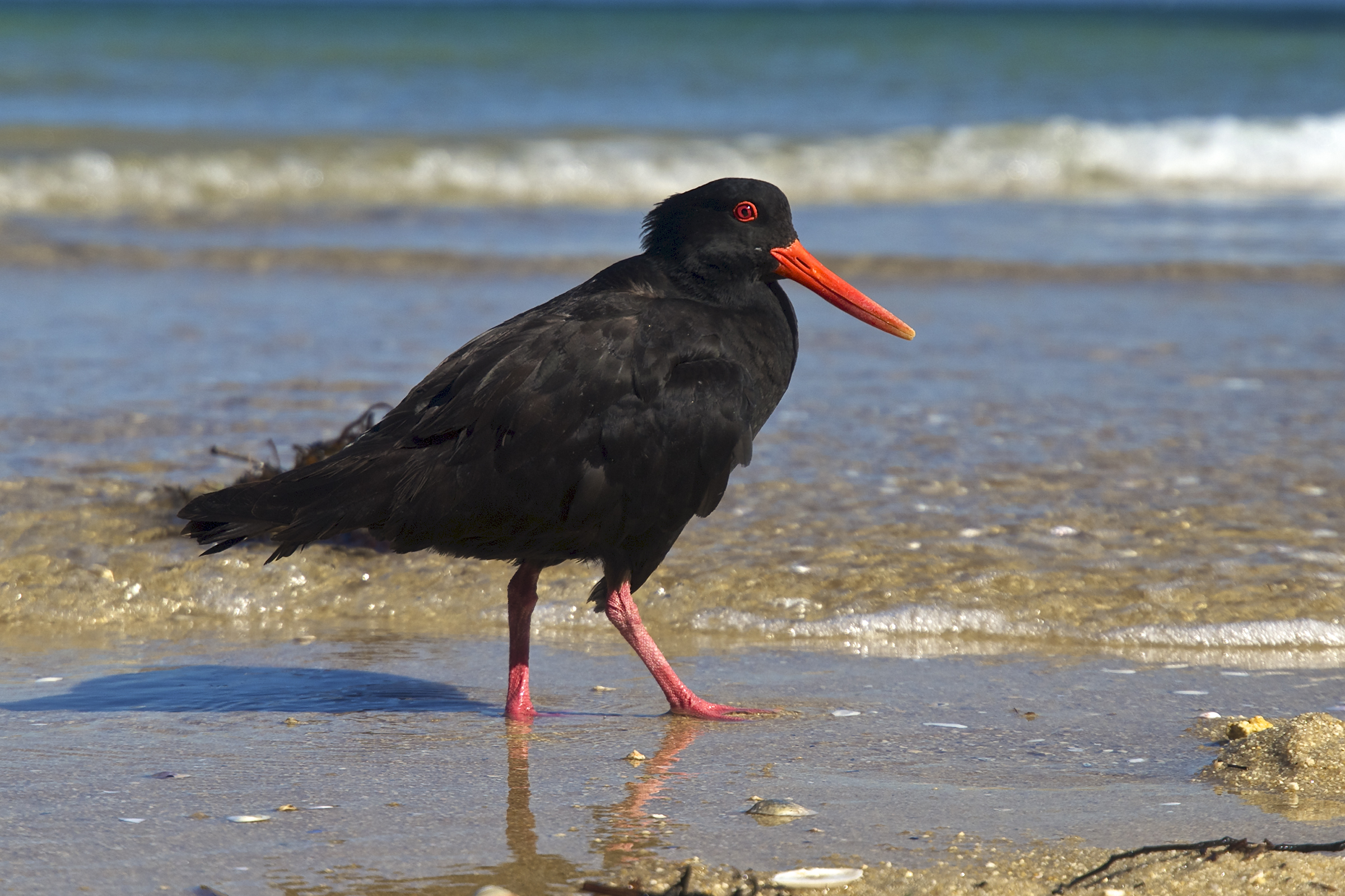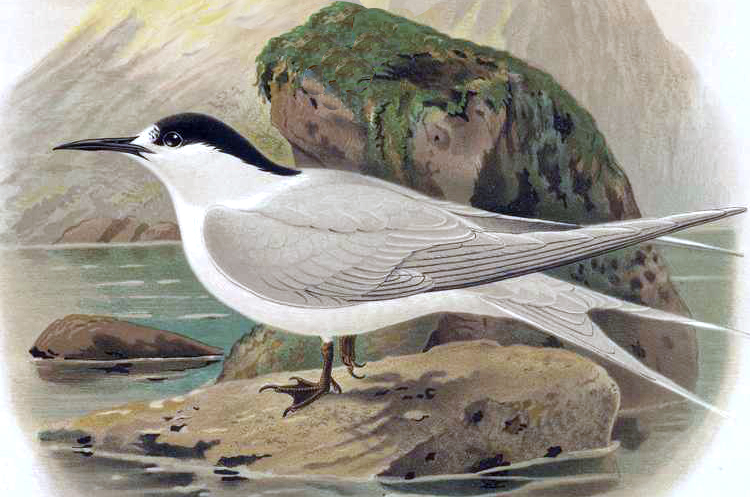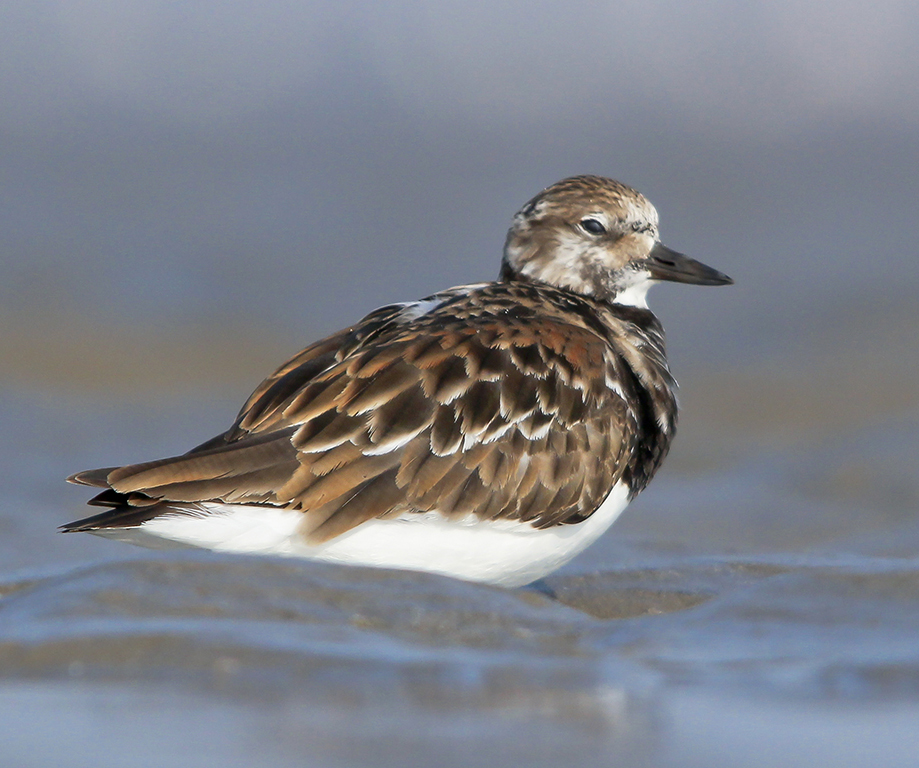|
Ward Beach
Ward Beach is a section of rugged coastline in the Marlborough Region of New Zealand that is known for unusual rock formations. The geological features include the exposed reef platforms that were uplifted by 2m or more during the 2016 Kaikōura earthquake, and the spherical concretions known as the Ward Beach boulders. Another formation known as the Chancet Rocks is located in a scientific reserve about 1.5km to the north of the Ward Beach roadend. They contain unusual trace fossils and provide amongst the best on-land evidence of the Cretaceous–Paleogene boundary in marine sediments in the Southern Hemisphere. Ward Beach has been used as a launching site by a locally based commercial crayfishing company for more than 40 years. However, the uplift of the beach caused by the 2016 earthquake prevented the company from safely launching boats from the previous location. Over a period of several years, the company has sought options that would provide a safe place to launch from ... [...More Info...] [...Related Items...] OR: [Wikipedia] [Google] [Baidu] |
Flaxbourne River
The Flaxbourne River is a river in the Marlborough Region, Marlborough region of New Zealand. It arises in the Inland Kaikoura Range and Halden Hills and flows east and then south-east into the South Pacific Ocean near Ward, New Zealand, Ward. It is named after the Flaxbourne sheep station established by Sir Sir Charles Clifford, 1st Baronet, Charles Clifford in 1847. The river is narrow and choked with willows. The river provides water for irrigation, and for stock and domestic supply. During summer the demand for water normally exceeds the availability. While the river is never dry, some of its tributaries dry up during most summers. As of 2017, there is an initiative to have Ward renamed as Flaxbourne. See also *List of rivers of New Zealand References External linksLand Information New Zealand - Search for Place Names Rivers of the Marlborough Region Rivers of New Zealand {{Marlborough-river-stub ... [...More Info...] [...Related Items...] OR: [Wikipedia] [Google] [Baidu] |
Late Cretaceous
The Late Cretaceous (100.5–66 Ma) is the younger of two epochs into which the Cretaceous Period is divided in the geologic time scale. Rock strata from this epoch form the Upper Cretaceous Series. The Cretaceous is named after ''creta'', the Latin word for the white limestone known as chalk. The chalk of northern France and the white cliffs of south-eastern England date from the Cretaceous Period. Climate During the Late Cretaceous, the climate was warmer than present, although throughout the period a cooling trend is evident. The tropics became restricted to equatorial regions and northern latitudes experienced markedly more seasonal climatic conditions. Geography Due to plate tectonics, the Americas were gradually moving westward, causing the Atlantic Ocean to expand. The Western Interior Seaway divided North America into eastern and western halves; Appalachia and Laramidia. India maintained a northward course towards Asia. In the Southern Hemisphere, Australia and Ant ... [...More Info...] [...Related Items...] OR: [Wikipedia] [Google] [Baidu] |
Pachystegia Insignis
''Pachystegia insignis'' is a species of flowering plants in the family Asteraceae. It is endemic to New Zealand New Zealand ( mi, Aotearoa ) is an island country in the southwestern Pacific Ocean. It consists of two main landmasses—the North Island () and the South Island ()—and over 700 smaller islands. It is the sixth-largest island count .... References Astereae Taxa named by Joseph Dalton Hooker Taxa named by Thomas Frederic Cheeseman Endemic flora of New Zealand {{Astereae-stub ... [...More Info...] [...Related Items...] OR: [Wikipedia] [Google] [Baidu] |
Calystegia Soldanella
The morning glory ''Calystegia soldanella'' (syn. ''Convolvulus soldanella'') is a species of bindweed known by various common names such as sea bindweed, seashore false bindweed, shore bindweed, shore convolvulus and beach morning glory. Description It is a perennial vine which grows in beach sand and other coastal habitats in temperate regions across the world. It is also known as 'The Prince's Flower' after Prince Charles Edward Stuart who sowed it on the Island of Eriskay, Scotland, when he landed there in 1745 to lead the Jacobite rising. The plant bears trailing, fleshy stems, kidney-shaped leaves, and creamy-white flower buds and attractive morning glory-like flowers with corollas delicate pink to vivid lavender. They are insect-pollinated. Distribution In North America ''Calystegia soldanella'' is found on the west coast and selected areas of the east coast. In the United Kingdom it is widespread on the sandy coasts of England and Wales, less common in Scotland and Nort ... [...More Info...] [...Related Items...] OR: [Wikipedia] [Google] [Baidu] |
Pied Stilt
The pied stilt (''Himantopus leucocephalus''), also known as the white-headed stilt, is a shorebird in the family Recurvirostridae. It is widely distributed with a large total population size and apparently stable population trend, occurring in Malaysia, Japan, the Philippines, Brunei, Christmas Island, Indonesia, Palau, Papua New Guinea, Australia, and New Zealand. It is listed as Least Concern on the IUCN Red List. It is sometimes considered a subspecies of the black-winged stilt (''H. himantopus''). Taxonomy ''Himantopus leucocephalus'' was the scientific name proposed by John Gould in 1837 who described a pied stilt from Australia. Description The pied stilt grows to a length of about with a wingspan of about . The back of the head and neck, the back and the upper surfaces of the wings are glossy greenish-black. The undersides of the wings are plain black and the remainder of the plumage is white, apart from the tail feathers which are tinged with grey. The long, thin legs ... [...More Info...] [...Related Items...] OR: [Wikipedia] [Google] [Baidu] |
Variable Oystercatcher
The variable oystercatcher (''Haematopus unicolor'') is a species of wader in the family Haematopodidae. It is endemic to New Zealand. The Maori name is torea-pango. They are also known as 'red bills'. Description "Variable" refers to the frontal plumage, which ranges from pied through mottled to all black. They are polymorphic meaning they have different genetic variants. These color differences are attributed to the latitude of the habitat, where the northernmost oystercatchers have significantly more white on their bodies than those of southern origin. All Stewart Island variable oystercatchers are black. They have pink legs, an orange eye ring and orange-red beaks. Similar to a needle in shape, the bill is thin and long, and darkens to a deep red color during the breeding season. Males are around 678 grams and females slightly larger at around 724 grams. Length of individuals range from 42 to 47 cm from beak to tail and have a short, sturdy body with a thick neck. Va ... [...More Info...] [...Related Items...] OR: [Wikipedia] [Google] [Baidu] |
White-fronted Tern
The white-fronted tern (''Sterna striata''), also known as tara, sea swallow, black-billed tern, kahawai bird, southern tern, or swallow tail, was first described by Johann Friedrich Gmelin in 1789. A medium-sized tern with an all-white body including underwing and forked tail, with grey hues on the over the upper side of the wing. In breeding adults a striking black cap covers the head from forehead to nape, leaving a small white strip above the black bill. This is the most abundant tern in New Zealand. It can be observed feeding on shoaling fish along the entire coastline and many of the smaller outlying islands. Breeding occurs from October to January on rocky cliffs, offshore islands and along the coast where pairs will nest on shingle, sand, shell or rock. Flocks may contain hundreds of breeding pairs that will nest in close proximity to one another. Large numbers of juveniles and some adults migrate to the south-east coast of Australia and parts of Tasmania in the autumn, wi ... [...More Info...] [...Related Items...] OR: [Wikipedia] [Google] [Baidu] |
Black-fronted Tern
The black-fronted tern (''Chlidonias albostriatus''), also known as sea martin, ploughboy, inland tern, riverbed tern or tarapiroe,Rod Morris and Alison Ballance, ''"Rare Wildlife of New Zealand"'', Random House, 2008 is a small tern generally found in or near bodies of fresh water in New Zealand, where it forages for freshwater fish, arthropods and worms. It has a predominantly grey plumage. Restricted to breeding in the eastern regions of the South Island, it is declining and threatened by introduced mammals and birds. It is rated as endangered on the International Union for Conservation of Nature (IUCN)'s Red List of Threatened Species. Taxonomy German naturalist Johann Reinhold Forster described the black-fronted tern from a specimen collected at Queen Charlotte Sound, Marlborough in 1832, giving it the binomial name ''Sterna antarctica'', however the name had already been used for the Antarctic tern by French naturalist René Lesson the previous year. The first valid des ... [...More Info...] [...Related Items...] OR: [Wikipedia] [Google] [Baidu] |
Caspian Tern
The Caspian tern (''Hydroprogne caspia'') is a species of tern, with a subcosmopolitan but scattered distribution. Despite its extensive range, it is monotypic of its genus, and has no accepted subspecies. The genus name is from Ancient Greek ''hudros'', "water", and Latin ''progne'', "swallow". The specific ''caspia'' is from Latin and, like the English name, refers to the Caspian Sea. Description It is the world's largest tern with a length of , a wingspan of and a weight of . Adult birds have black legs, and a long thick red-orange bill with a small black tip. They have a white head with a black cap and white neck, belly, and tail. The upper wings and back are pale grey; the underwings are pale with dark primary feathers. In-flight, the tail is less forked than other terns, and wingtips are black on the underside. In winter, the black cap is still present (unlike many other terns), but with some white streaking on the forehead. The call is a loud heron-like croak. Distribu ... [...More Info...] [...Related Items...] OR: [Wikipedia] [Google] [Baidu] |
Ruddy Turnstone
The ruddy turnstone (''Arenaria interpres'') is a small cosmopolitan wading bird, one of two species of turnstone in the genus ''Arenaria''. It is now classified in the sandpiper family Scolopacidae but was formerly sometimes placed in the plover family Charadriidae. It is a highly migratory bird, breeding in northern parts of Eurasia and North America and flying south to winter on coastlines almost worldwide. It is the only species of turnstone in much of its range and is often known simply as turnstone. Taxonomy The ruddy turnstone was formally described by the Swedish naturalist Carl Linnaeus in 1758 in the tenth edition of his ''Systema Naturae'' under the binomial name ''Tringa interpres''. The species is now placed together with the black turnstone in the genus '' Arenaria'' that was introduced by the French zoologist Mathurin Jacques Brisson in 1760 with the ruddy turnstone as the type species. The genus name ''arenaria'' is from Latin ''arenarius'', "inhabiting sand" ... [...More Info...] [...Related Items...] OR: [Wikipedia] [Google] [Baidu] |
Banded Dotterel
The double-banded plover (''Charadrius bicinctus''), known as the banded dotterel or pohowera in New Zealand, is a species of bird in the plover family. Two subspecies are recognised: the nominate ''Charadrius bicinctus bicinctus'', which breeds throughout New Zealand, including the Chatham Islands, and ''Charadrius bicinctus exilis'', which breeds in New Zealand's subantarctic Auckland Islands. Taxonomy A 2015 study found its closest relatives to be two other plovers found in New Zealand, the New Zealand dotterel (''Charadrius obscurus'', also called the New Zealand plover) and the wrybill (''Anarhynchus frontalis'', which the study found to be in the ''Charadrius'' clade). Description The double-banded plover is distinguished by a dark, grey-brown back with a distinctive white chest and a thin band of black situated just below the neck running across the chest along with a larger brown band underneath. During breeding season, these bands are more dominantly shown on the males ... [...More Info...] [...Related Items...] OR: [Wikipedia] [Google] [Baidu] |

.jpg)




